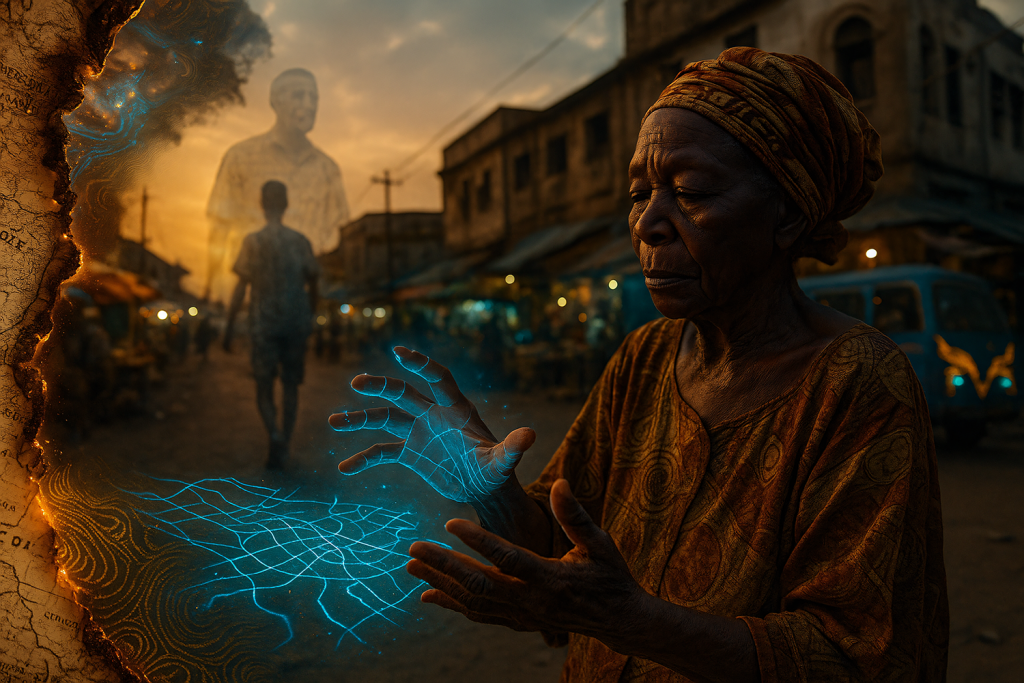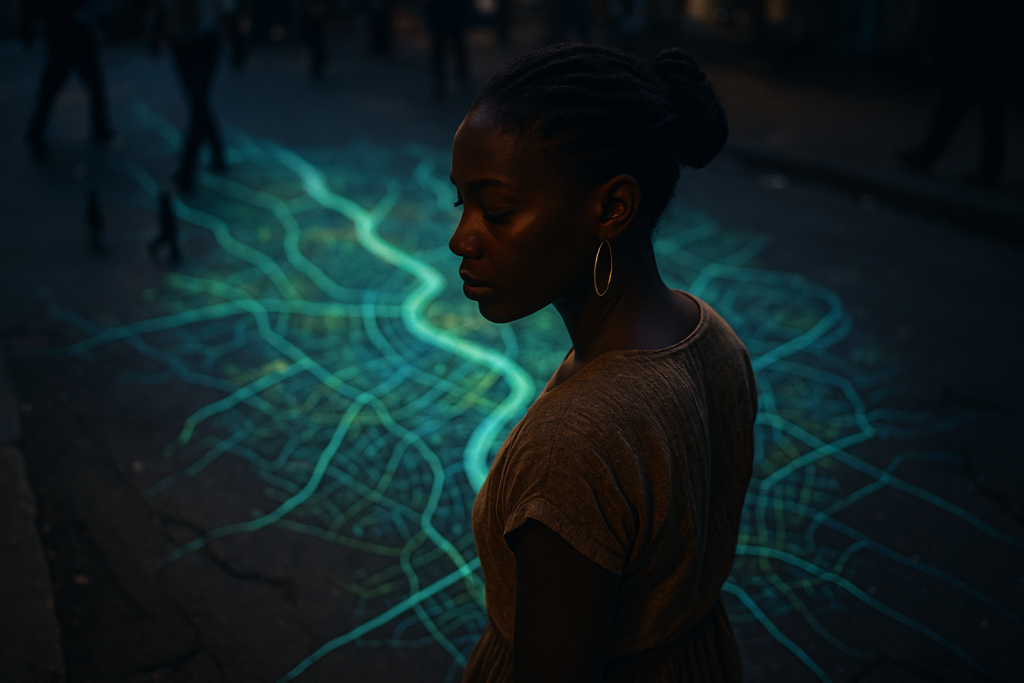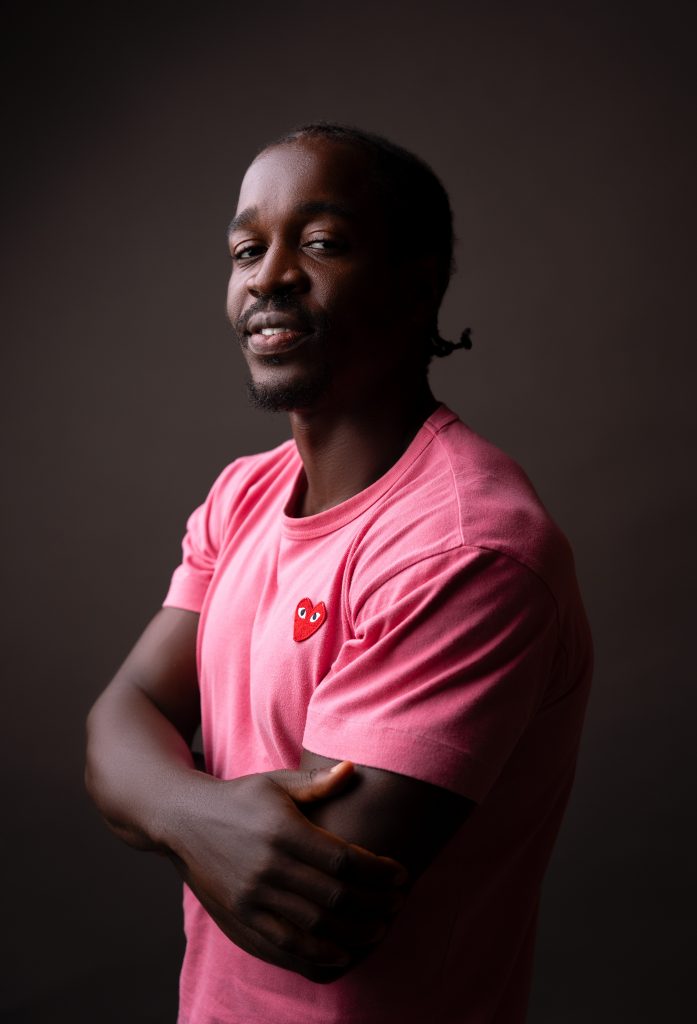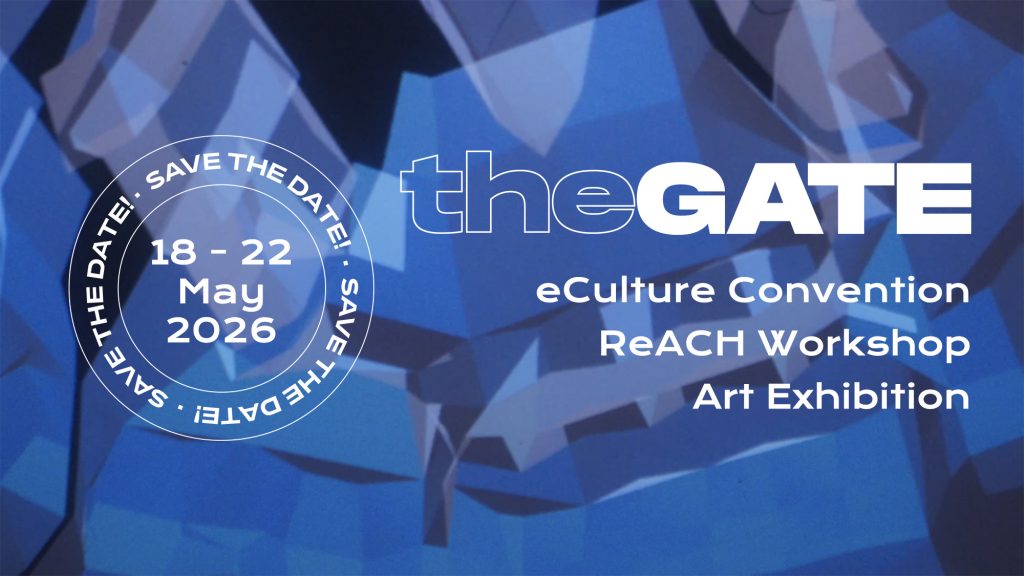Mobility as Memory: Kinshasa’s Living Map by Chinedum Muotto
As part of the Afropean Intelligence Residency Program.
Challenge “Futurism and Geolocation”

The selected project
Mobility as Memory


Mobility as Memory is a creative research project that reimagines how people move through the city of Kinshasa—not just as transport, but as a powerful way of remembering. Many of the roads and structures in Kinshasa today were built during colonial times, designed to control people rather than support their freedom. This project looks beneath those roads to find older, hidden paths—ancestral footways, spiritual routes, and market rhythms that once shaped the city.
Instead of using satellites or traffic data, we train Artificial Intelligence on stories, songs, and sounds passed down through generations—turning AI into a tool for cultural memory. The result is a “living map”: a digital artwork that shifts and moves, revealing forgotten routes and sacred knowledge.
Key features of the project include: – Ancestral AI interfaces designed like Kuba cloth or traditional cosmograms, – Sound maps made from spiritual chants and local recordings, – Workshops where young people and elders co-create with AI and ancestral avatars.
This is not just about designing better streets—it’s about healing old wounds. It’s about remembering who we are and where we’ve come from.
Guided by the spirit of Ubuntu—“I am because we are”—Mobility as Memory challenges colonial ideas of space and movement. It offers a new, Afrocentric vision of the city: one that listens, remembers, and flows like a river. It is both a map and a message: to move with care, to remember with pride, and to shape futures that honour those who walked before us.
Host institution
Académie des Beaux-Arts, Kinshasa (CD)
European partner
Africa Museum, Tervuren (BE)
The artist
Chinedum Muotto

Picture by Timi Okanlawon
“A na-esi na ala ama mma, ama na-ama” — You know a beautiful compound by its foundation.
Chinedum Muotto is a Nigerian-Irish interdisciplinary artist, researcher, and curator. His work connects ancestral memory, spatial justice, and new technologies—building bridges between what was, what is, and what could be. Rooted in projects like Deferred Restitution and The Weight of Water, his installations reimagine how we move, remember, and repair across cities and histories. He has held residencies at ZK/U Berlin and the Irish Museum of Modern Art, and was the first Nigerian artist to create an AI artwork now housed in the Nigerian National Collection. This was part of the Reimagining Hope residency, supported by Nigeria’s Federal Ministry of Art, Culture and the Creative Economy. For Chinedum, this S+T+ARTS residency is a timely portal—merging AI and Indigenous intelligence to imagine plural, ethical African futures.
+ Website
+ Instagram
& Check-out the other selected projects for the Afropean Intelligence Residency Program:
+ Challenge 1: Intercultural AI: Weaving Worlds through Art and Algorithms | “Untangler: Worlds Reimagined” – Peace Olatunji
+ Challenge 1bis: “Decoding Egwu: reclaiming indigenous intelligence through AI, dance and Igbo” – Emmanuel Ndefo & Dan Xu
+ Challenge 3: Plural Computation | “The Affogbolo’s Home” – Pierre-Christophe Gam
+ Challenge 4: Psychogeography and the Influence of AI | “Bursting the last bubble” – Tamer Elshabrawy
+ Challenge 5: Archives & Memory | “Adorned memory: Reimagining Egyptian Indigenous Archives Through Jewellery” – Khanya Mthethwa
+ Challenge 6: ZaZi: An African Educational AI Model | “LORAS AS AN ARCHIVE – A LIVING ARCHIVE” – Evans Akanyijuka
+ Challenge 7: Beyond Borders: AI, Climate, and Resource Justice in Africa | “Cry To The Water” – Chipo Mapondera
+ Challenge 8: Digital Lukasa: An Intelligent Archival Tablet | “The Memory Performer: digital reincarnation of Luba wisdom” – Mahoutondji Kinmagbo
+ Challenge 9: Provenance and Social Memory | “TERRITOIRE TISSé: Art Royal Kuba entre tradition et (R)évolution” – Melisa Kayowa


